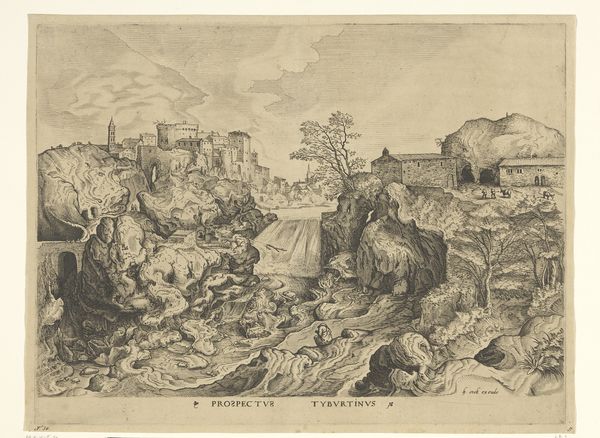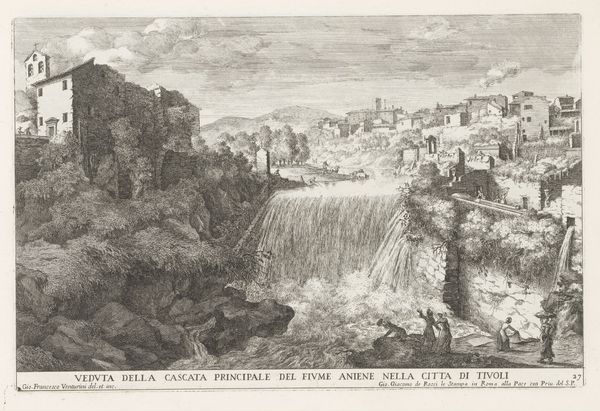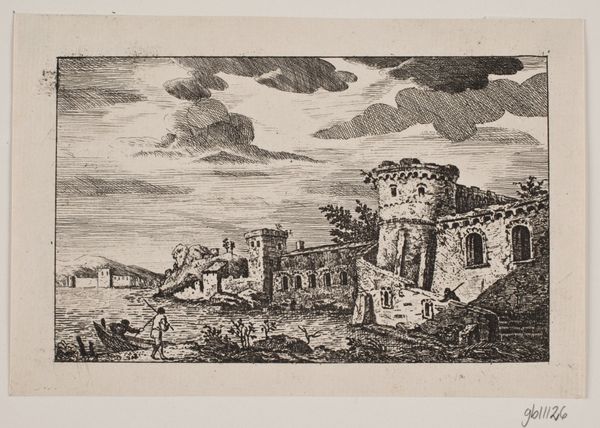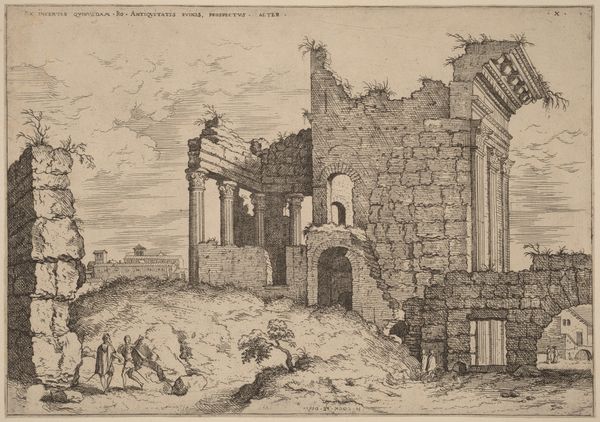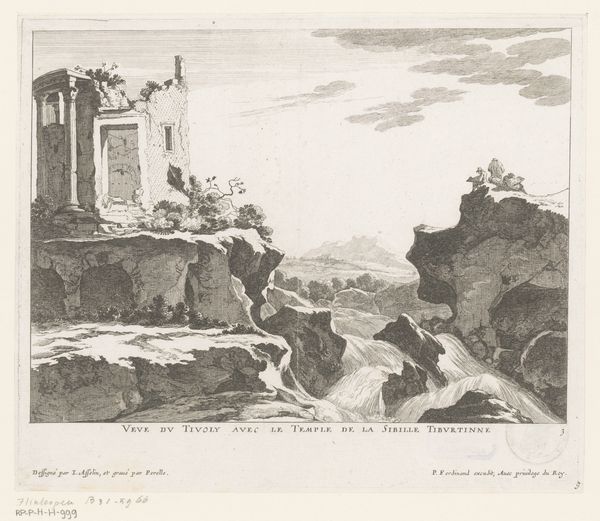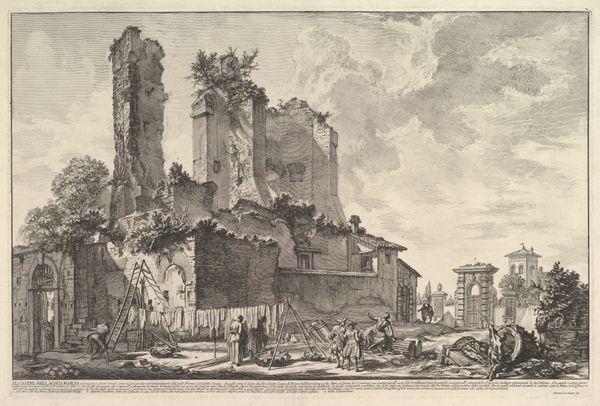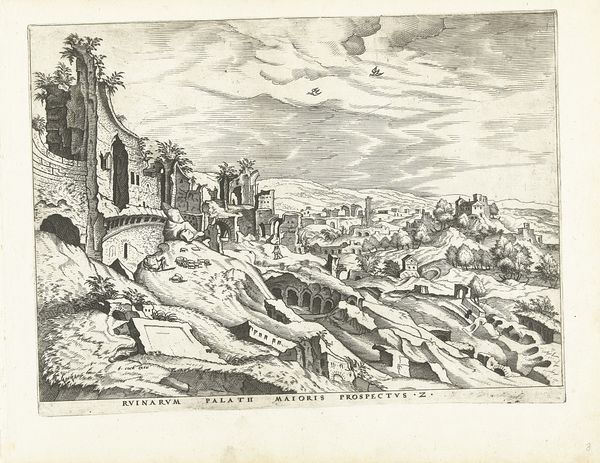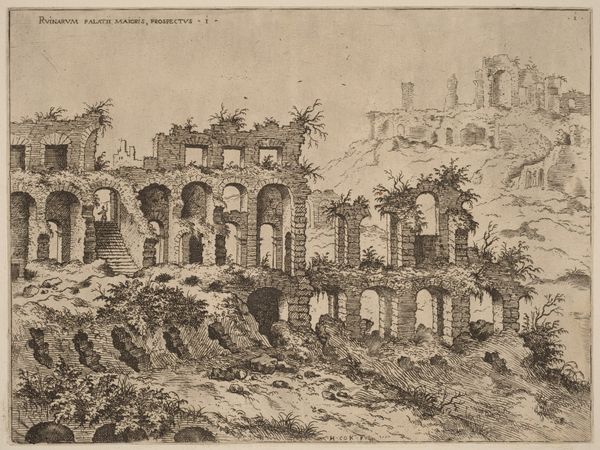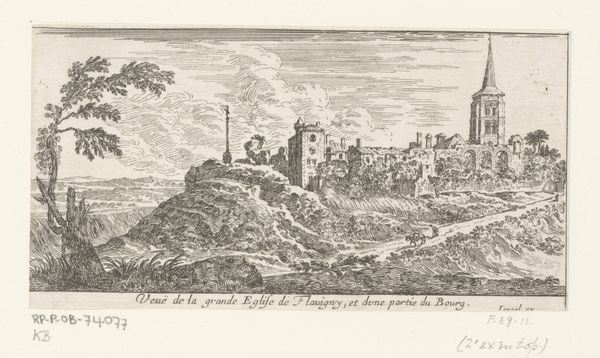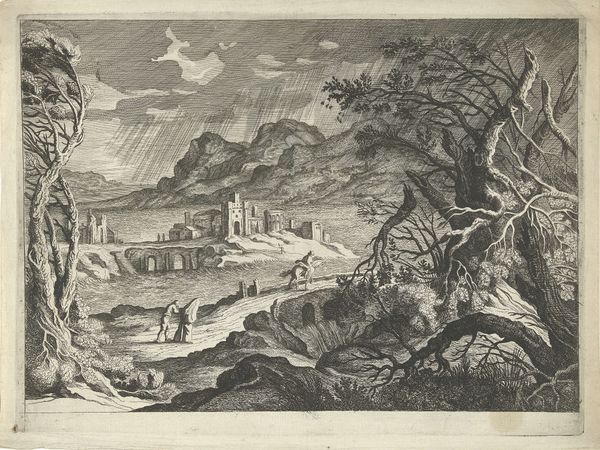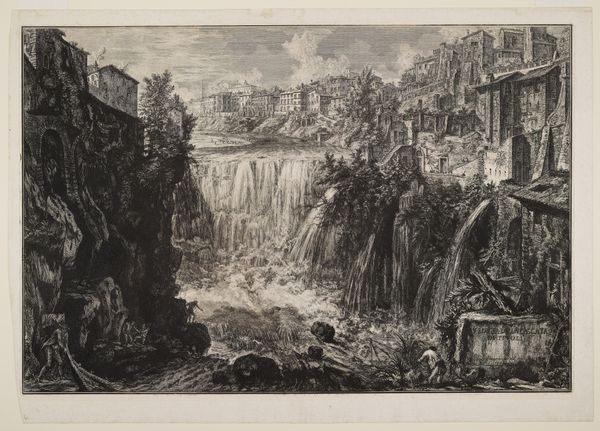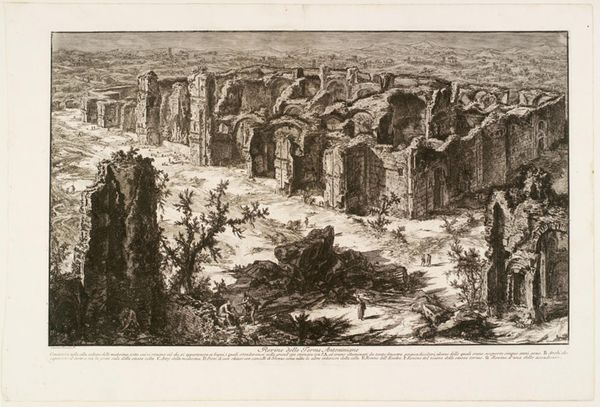
Landschap met waterval en tempel van de Tiburtijnse Sibille te Tivoli 1653 - 1691
0:00
0:00
print, etching, engraving
#
baroque
# print
#
etching
#
landscape
#
waterfall
#
cityscape
#
engraving
Dimensions: height 228 mm, width 344 mm
Copyright: Rijks Museum: Open Domain
Editor: Here we have Giovanni Francesco Venturini's etching, "Landschap met waterval en tempel van de Tiburtijnse Sibille te Tivoli," dating roughly from 1653 to 1691. It's incredibly detailed, but also feels like a romanticized view. What stands out to you about this depiction of Tivoli? Curator: The image highlights a very particular tension of the Baroque era: the relationship between the classical past and the modern, developing world. Venturini gives us not just a landscape, but a curated view of civic identity. What purpose did prints such as this one serve in that period, do you think? Editor: Perhaps to promote Tivoli? Almost like early tourism propaganda, showing off the beautiful ruins. Curator: Precisely. This print, along with others of Roman sites, became very popular souvenir for wealthy European travelers undertaking the Grand Tour. Note how the Sibyl's Temple is prominently positioned, but the rest of the built environment is… not as impressive. Is that an accurate depiction, or is Venturini communicating something specific about Tivoli’s status at the time? Editor: I see your point. There’s a contrast there. The glorious ruin versus… well, just regular buildings. Almost implying that the town has fallen from its former splendor? Curator: Exactly. Consider, too, the role of patronage. Venturini likely made this for sale, thus, he would adjust his view based on what was considered valuable and how the site should be seen in the public eye. How does acknowledging its social purpose affect your understanding of the artwork? Editor: It definitely moves it away from just being a pretty picture. It gives it an argument, a perspective rooted in the culture of the time. I will never see a landscape in the same way again. Curator: Indeed. Paying attention to the forces surrounding artistic creation, whether it's economics or politics, reveals so much about the meaning of art.
Comments
No comments
Be the first to comment and join the conversation on the ultimate creative platform.
